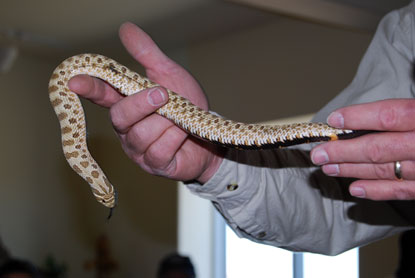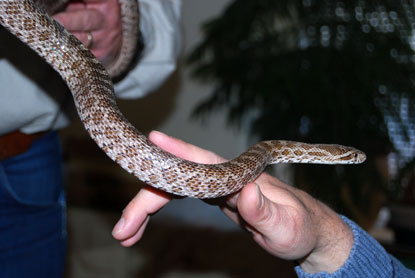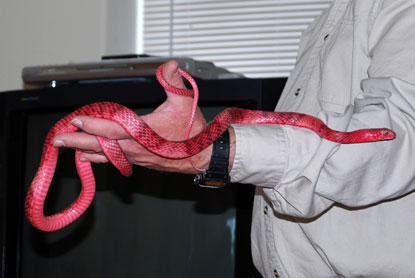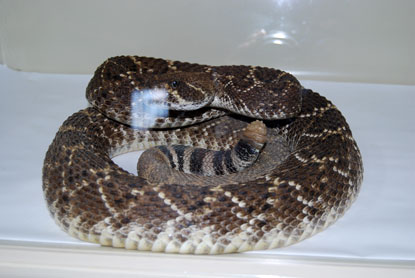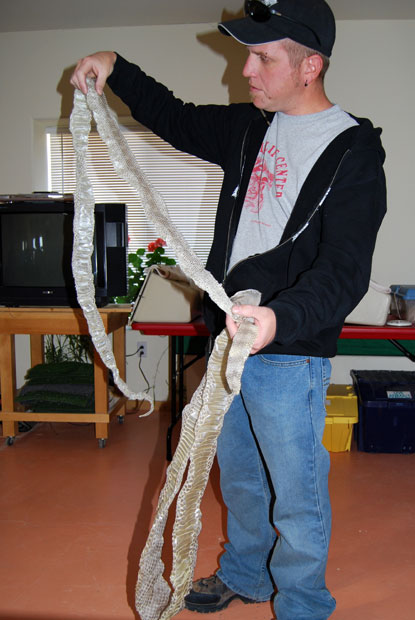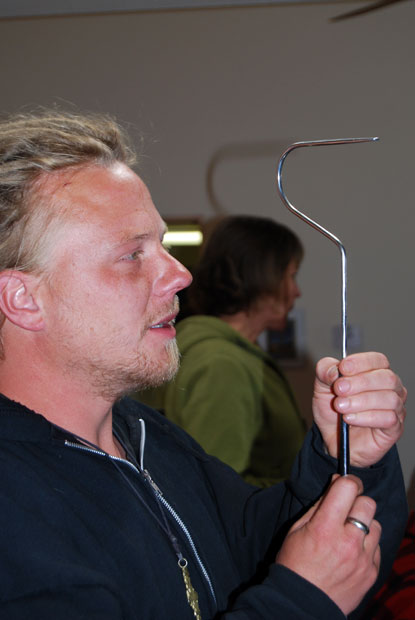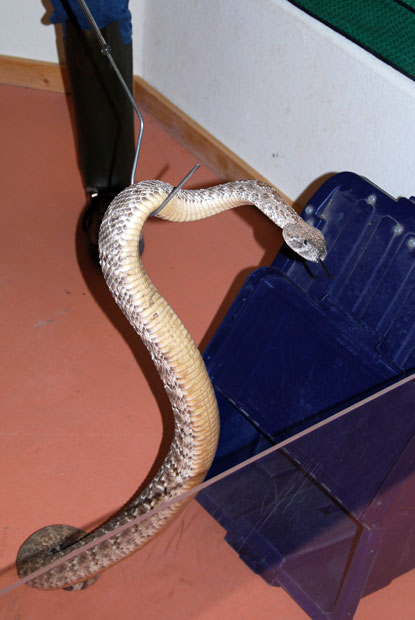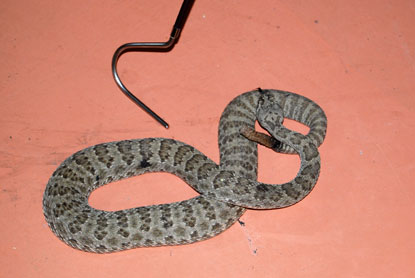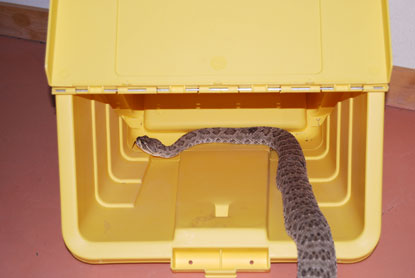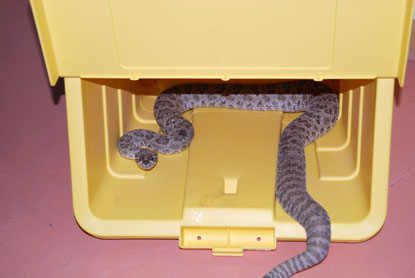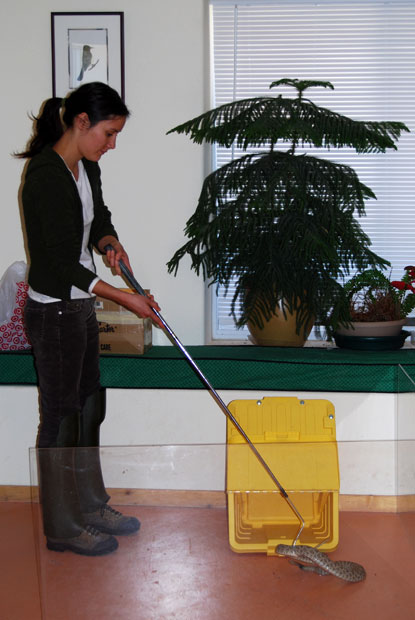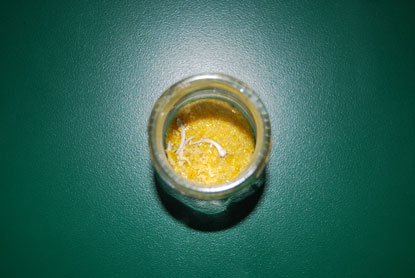Herping the Caha del Rio
On Sunday, April 29, I took the dogs and went looking for snakes. My first target was between Rio en Medio and Chupadero Creek on the west slope of the Sangre de Cristo mountains. I was hoping I'd find some milk snakes, but it got cloudy before I had a chance to get there.
So, I decided to go out to the Caha del Rio, a large swath of the Santa Fe National Forest on the east bank of the Rio Grande. This includes the east side of White Rock Canyon. My first destination was near Buckman's well, just a bit past Diablo Canyon. I found a place to park my truck and went on a cross-country bushwack toward the river across numerous barrancas and arroyos. About a quarter of the way to the river we came upon this western coachwhip (Masticophis flagellum), which was about 4.5 feet long.
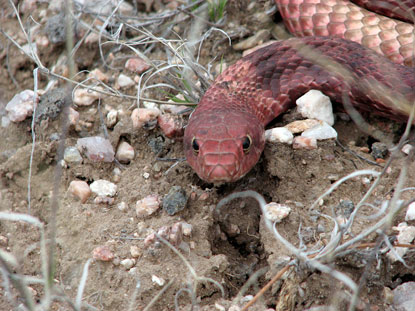
04/29/2007 @ 2:04:42 PM MDT
My dog Cisco walked right over it without seeing it. When I caught my first glimpse, I thought it was a bit of discarded hose. It didn't seem to mind being looked at, probably because it was confident in its camouflage.

04/29/2007 @ 2:05:11 PM MDT
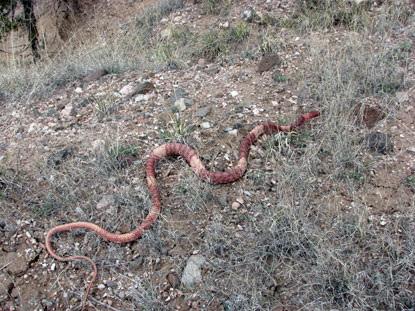
04/29/2007 @ 2:05:11 PM MDT
When I picked it up with my hook, it decided that was enough and moved quickly to its hole.
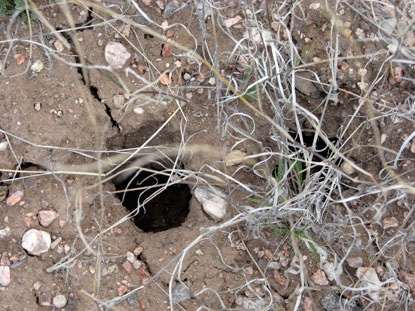
04/29/2007 @ 2:06:06 PM MDT
Down it went.
Meanwhile, all kinds of drunk crazies with firearms where out and about, so I decided to head to a different part of the Caha. I drove south until I got to some power lines that cross the river, and then drove west under the power lines. I ended up at the east wall of White Rock Canyon, which is about 500 feet high at that point. I got out of the truck to take some pictures of the river. I took my snake hook, but wasn't really in snake-seeking mode. That must have been why I didn't notice the prairie rattlesnake (Crotalus viridis viridis) right next to my foot as I was taking pictures. It did not rattle at all as I stood there snapping away. I must have stood next to the snake for a good five minutes without knowing it was there.
When I finally decided to move, it immediately went into defensive mode. The rattling was so close behind me that I jumped forward without having time to decide what to do. It's a good thing that I did, as the snake made an attempt to strike, moving its center of gravity forward and causing it to tumble out from its hiding place under a sage bush.
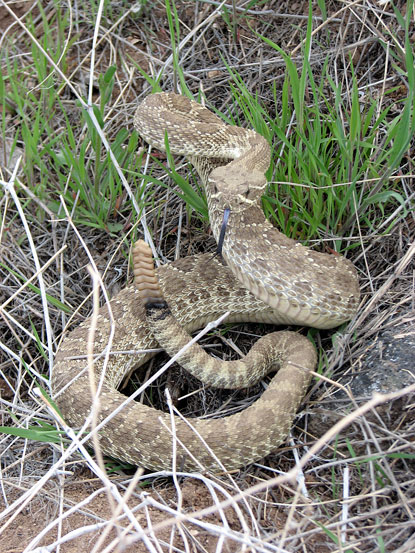
04/29/2007 @ 5:17:30 PM MDT
It was probably my closest call ever with a venomous snake. While it wasn't very big at 2.25 feet, it would have been a very dicey drive back to civilization with a rattlesnake bite on my gas pedal leg on treacherous and challenging 4WD tracks.
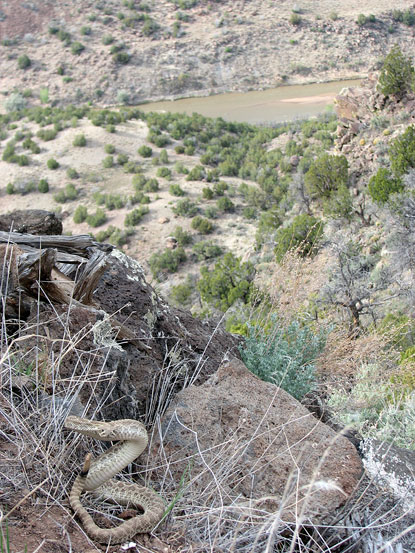
04/29/2007 @ 5:20:07 PM MDT
I thanked Mother Nature for keeping me safe and placed the snake for this shot of the river.



